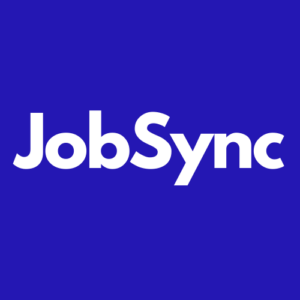
Talent acquisition (TA) has a reputation for being afraid of data. Still, data-driven recruiting is less about cold metrics and more about understanding where you want your process and outcomes to be. Know where you’re going, and you will be delighted with how data can help you get there.
But how do you get reliable data in a form that’s easy to use? How do you serve the many different stakeholders who need to consume TA data in a meaningful way? How do you make sure technology is helping, not hindering, your efforts? And how do you get started on that journey?
We sat down with Luke Eaton, the industry’s go-to expert in data-driven recruitment strategies, and Ben Abear, Recruiting Operations Leader at Google Fiber, to explore these big questions. Here are the top takeaways from the roundtable conversation.
1: The panacea for data-driven recruitment isn’t metrics, reports, or predictions—but a continuously improving process.
Starting with the end in mind, the goal of data-driven recruitment is a holistic end-to-end process funnel where everything we learn at each step feeds straight back into the process itself. Instead of looking at data retroactively, at the end of every month or quarter, the process is fed by the data, driving stakeholders to continuously improve to make sourcing and hiring better and easier.
To accomplish this, you must start with a clear data strategy. Defining what data you need, at what point in the process, and for what purpose must be the foundational blocks of data-driven recruitment. This is the time to channel traditional assumptions—do you need someone’s last name to consider them for a job? What about their street address? Are we measuring outbound emails by the recruiter? To what end?
“The panacea is a holistic look at the process.” – Luke Eaton
2: Data-driven recruiting is both human-centered and data-centered.
To reach the ideal state, you need qualitative data and quantitative data. The first includes sentiment analysis, experiences, feelings, and behaviors—that will help you empower candidates, recruiters, hiring managers, and ultimately, hires during the employee lifecycle. Quantitative data enables you to validate or invalidate your intuition. It will help you take advantage of marginal gains in the recruiting process.
“A lot of times in RecOps, we look at things from a TA-centric perspective instead of expanding that out to the entire ecosystem. I really like the idea of building a process for everybody with user-centered design.” – Ben Abear
3: Before getting to the data, have the right conversations.
Since data exists to improve your processes, ensure you know what those processes look like now. Existing documentation is a good start, but it may not reflect today’s reality. Talk to stakeholders to get the whole picture. It’s not about the next step in the process but what it takes to get to that next step. Once you understand how things work and where the bottlenecks, constraints, and dependencies are, you can use data to find the root cause of the problem. Often, it’s not what everybody thinks it is. And often, it’s more solvable than anyone realizes.
“Understand, from each user’s perspective, what good looks like. What part of their experience has been good, bad, and indifferent? What would they change? What would they keep? Then pair that up with the data that already exists.” – Ben Abear
4: Rationalize data from different stakeholders to bring it into integrity.
Data is often shared across the organization in too many different systems, spreadsheets, formats, and languages. You can only get to the truth once you bring the data together in a meaningful way. Focus on having rational, accessible data and trying to break down those silos. Once you’ve brought the data to high quality, getting it positioned and framed in a way that is relevant to your executive team, HR, recruiters, or finance becomes a lot easier.
“Rationalizing the data is about 80% of the work.” – Ben Abear
5: Communicate the data in ways that resonate with a given stakeholder.
Different stakeholders have different priorities and agendas. Cost per hire will be very important to someone whose P&L is impacted by recruitment. Recruiters might care more about time to fill. Be prepared to interpret and communicate the data in a way that is relevant for your audience, and establish clear, documented goals at the beginning. You can’t have a conversation about the impact of data if you don’t know what each stakeholder is using it for.
“We can’t make the assumptions that these metrics are interpreted in the same way by the same people.” – Luke Eaton
6: Don’t get caught up in vanity metrics; focus on actionable insights.
It’s easy to get distracted by numbers that make TA look good, but they may not be driving real results. Recruiting teams track endless activity-based metrics, and while those may be worthwhile to ensure your recruiting engine is operating at peak performance, it’s important to not confuse activity with outcomes, especially business outcomes. Instead, focus on metrics that are tied to an objectively better outcome and bottom line for the organization. Your C-suite wants the ROI, so frame the story in the way that it’s being told from the business side.
“We’re not as mature a business unit as finance, and we have to fight for our seats at the table. We can only do that with data. They’re not going to trust us with arguments from authority.” – Luke Eaton
7: Data governance is critical to realizing efficiency gains.
Most businesses don’t even have the ability to make a 4% improvement on their process, let alone achieve a utopian future state of continuous optimization. Understanding what data governance is for your organization and building a system to operationalize it must be part of your data strategy. Fixing any data governance issues so there are clear roles and responsibilities and everyone knows who is accountable for what process, result, or metric is key to driving results.
“Governance has to be baked into any recruitment process. If we do that, then we can maximize efficiency gains over time.” – Luke Eaton
8: Use data to propose a hypothesis, then iterate.
Data can show the problem, but it can’t necessarily tell you what the solution is. You need to use insights and intuition, combined with data, to form a hypothesis but avoid becoming paralyzed by trying to find the perfect answer right away. Start with your point of view and iterate with minor changes based on the data. Remember that just because you aren’t aware of a solution doesn’t mean a solution doesn’t exist. Walk into problems with an assumption that someone has solved them; you just have to figure out who solved them.
“Pick a point of view. Start with that. Show it up and generate questions.” – Ben Abear
9: The tool is not the process.
When it comes to technology, don’t jump into something just because it’s shiny, new, or cool—the tool has to serve the process, not the other way around. If the process is not yet optimized, adding a tool may enable bad habits or worsen your problems.
“Don’t let your systems or your tools become your process. I’ll keep saying that over and over. Think about what you actually want your process and your experience to be.” – Ben Abear
10: The best antidote to “service thinking” is leveraging data to become a strategic function.
In any organization, revenue-generating functions tend to be better regarded and more influential than service-based functions like TA. Data is key to changing that perception. With data showing the impact of your recruiting efforts on the bottom line, you can shift from being a cost center to a strategic partner to the business.
“It’s a matter of maturing TA and having the C-suite understand that this data can impact their bottom line in a massive way. That’s really how you get the C-suite to start listening to your insights.” – Luke Abear
Missed the roundtable? Watch the recording of ‘Unlock the Power of Data in Recruitment’ here


